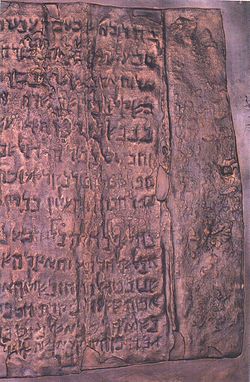| List of the manuscripts from Qumran Cave 3 | |
|---|---|
 A part of a replica of the Copper Scroll that was found in Qumran Cave 3. | |
| Material | Papyrus, Parchment, and Copper |
| Writing | Hebrew, Aramaic, Greek, and Nabataean |
| Created | Est. 408 BCE to 318 CE |
| Discovered | 1952 |
| Present location | Qumran |
The following is a list of the Dead Sea Scrolls from the cave 3 near Qumran.
